Remarkable Cryptic Diversity of Paratylenchus spp. (Nematoda: Tylenchulidae) in Spain
- PMID: 33919566
- PMCID: PMC8073821
- DOI: 10.3390/ani11041161
Remarkable Cryptic Diversity of Paratylenchus spp. (Nematoda: Tylenchulidae) in Spain
Abstract
In previous studies, fifteen species of Paratylenchus, commonly known as pin nematodes, have been reported in Spain. These plant-parasitic nematodes are ectoparasites with a wide host range and global distribution. In this research, 27 populations from twelve Paratylenchus species from 18 municipalities in Spain were studied using morphological, morphometrical and molecular data. This integrative taxonomic approach allowed the identification of twelve species, four of them were considered new undescribed species and eight were already known described. The new species described here are P. caravaquenus sp. nov., P. indalus sp. nov., P. pedrami sp. nov. and P. zurgenerus sp. nov. As for the already known described species, five were considered as first reports for the country, specifically P.enigmaticus, P. hamatus, P. holdemani, P. israelensis, and P. veruculatus, while P. baldaccii, P. goodeyi and P. tenuicaudatus had already been recorded in Spain. This study provides detail morphological and molecular data, including the D2-D3 expansion segments of 28S rRNA, ITS rRNA, and partial mitochondrial COI regions for the identification of different Paratylenchus species found in Spain. These results confirm the extraordinary cryptic diversity in Spain and with examples of morphostatic speciation within the genus Paratylenchus.
Keywords: D2-D3 of 28S rRNA; ITS rRNA; cytochrome c oxidase subunit 1; molecular; morphology; phylogeny; rRNA; taxonomy.
Conflict of interest statement
The authors declare no conflict of interest. The funders had no role in the design of the study; in the collection, analyses, or interpretation of data; in the writing of the manuscript, or in the decision to publish the results.
Figures
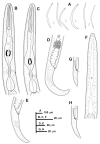
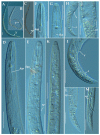
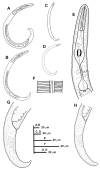
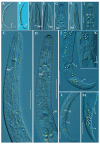




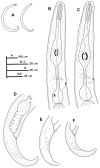

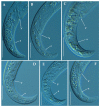

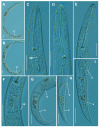
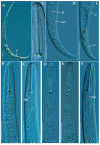
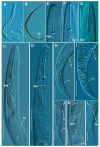

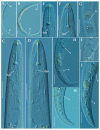
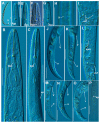
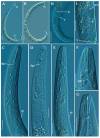
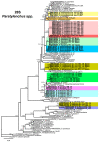

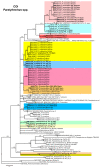
References
-
- Micoletzky H. Die Freilebenden Erd-Nematoden. Archiv für Naturgeschichte; Berlin, Germany: 1922.
-
- Ghaderi R., Geraert E., Karegar A. The Tylenchulidae of the World, Identification of the Family Tylenchulidae (Nematoda: Tylenchida) Academia Press; Ghent, Belgium: 2016.
-
- Ghaderi R. The damage potential of pin nematodes, Paratylenchus Micoletzky, 1922 sensu lato spp. (Nematoda: Tylenchulidae) J. Crop Prot. 2019;8:243–257.
-
- Schmidt J.H., Seeger J.N., Von Grafenstein K., Wintzer J., Finckh M.R., Hallmann J. Population dynamics and host range of Paratylenchus bukowinensis. Nematology. 2020;22:257–267. doi: 10.1163/15685411-00003304. - DOI
LinkOut - more resources
Full Text Sources
Other Literature Sources
Research Materials
Miscellaneous

